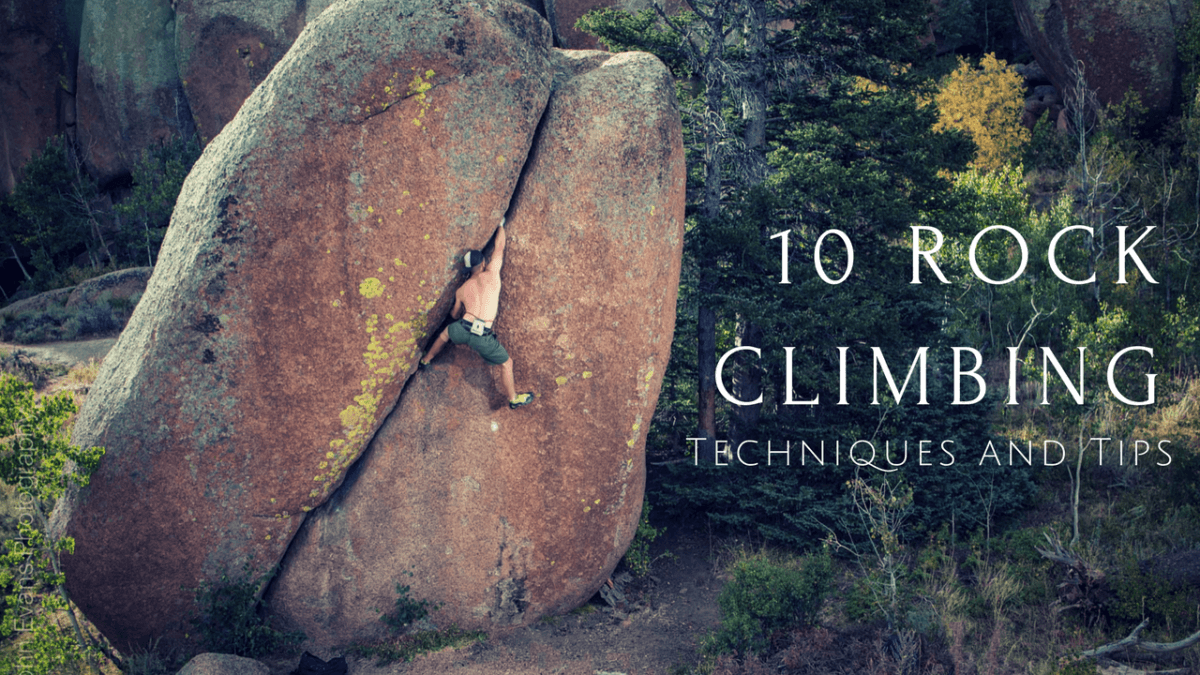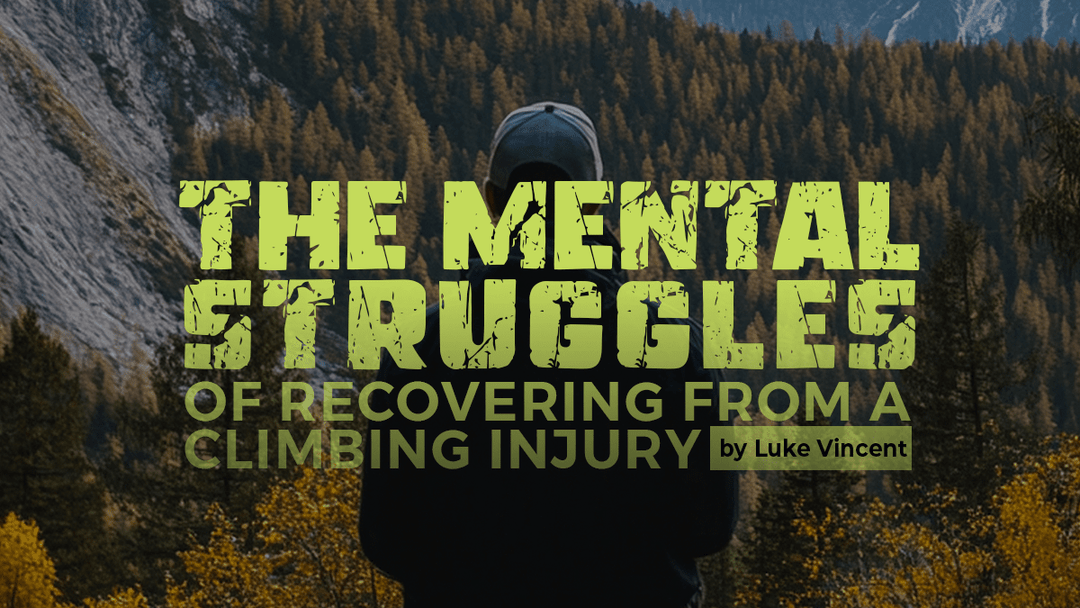10 Rock Climbing Techniques and Tips

Are you getting started in climbing or want to improve your skills? Check out these nine rock climbing techniques and tips every climber should know.
Rock climbing is one of the most action-packed and exciting activities a person can participate in. Climbing requires the perfect balance of mental and physical agility. It can get you in shape without feeling like a traditional workout and even help with mental health issues like depression.
Whether you’re a novice climber or just looking to perfect your form, educating yourself on climbing fundamentals is essential.
10 Rock Climbing Techniques and Tips that You’ll Need to Know About
1. Inform an Emergency Contact

Safety is the most crucial factor when it comes to rock climbing, and it’s recommended that climbers find a knowledgeable, experienced partner or hire a guide. Even if you are more experienced, hiring a guide while exploring new areas may be helpful to learn new techniques and find lesser-known routes.
Before you head out for the day, make sure someone knows your climbing plans. That way, should something terrible happen on your climb, your emergency contact can send help your way.
It doesn’t take much for conditions to become treacherous, and you never know when having contact can come in handy.
2. Plan Your Day
Part of the thrill of outdoor climbing is the adventure and exploration. However, exploration and adventure are not the antitheses of planning.
Do your research before you set out for the day. Look up the areas online to adequately prepare for your exciting climb. Mountain Project is an excellent resource for that type of beta.
Determining your goals is a great way to plan your day, but your research will also tell you what to be wary of. Pay close attention to the types of weather patterns and wildlife people mention. You’ll learn what kind of clothes to wear/pack, how many quickdraws (or other gear) each route requires, the length of rope needed so you can get back to the ground, and if a specific route is even worth the approach.
3. Practice

This is a tip for newbies: don’t expect to conquer a route/problem immediately. Like anything else, it will take hours of dedication and practice. Everyone climbs at different levels, and your goal, in the beginning, should enjoy your day.
If you’ve never climbed before, consider visiting an indoor gym. There are hundreds nationwide, so a few venues are likely in your immediate area. Climbing is one of the fastest-growing sports worldwide, and gyms are popping up everywhere.
However, you’ll need to practice more than rock climbing techniques. Take a class on climbing safety, or at least speak to a professional to get some tips before heading out on your first excursion. Gyms also have resources to help hire a guide or go out as a group on your first outing.
4. Slow Down and Rest
One of the most challenging climbing techniques to master is remembering to rest and shake out your arms. The feeling that you can’t possibly hold on any longer because you don’t have the strength in your arms is called getting “pumped.”
There are a few ways to avoid the pump:
- Use controlled movements and focus on your feet. Your feet should drive your weight up the wall while your hands are used for balance. Plan your next move, place your feet precisely, then move your arms.
- Climb with straight arms and hang from your skeleton rather than pulling yourself up the wall. Keeping your arms mostly straight where possible will help to prevent muscle fatigue early in the climb.
- Rest and shake out your arms when you find a rest hold.
5. Feet First

Imagine you’re far above your last quickdraw. Your heart is racing, and your palms are beginning to sweat. You reach for that next hold only to discover that nothing is there. Your hand slaps around in vain searching.
It can be easy to lose yourself and forget to plan your next movements. Think a couple of moves ahead, like chess. Planning your feet first and then consider your hands.
Placing your feet first allows you to continue advancing while your hands will help you maintain balance. Feet should always be your focus because they are the driving force for your progress. Remember, hands are for balance while feet move you up.
6. Focus on Your Breathing
There’s been a lot of talk about the physicality needed for rock climbing, but mental strength is part of the game, too. Athletic breathing is a great way to improve your gym performance or mountain performance.
Keep an even keel and remain focused on your breathing. Especially in higher elevation areas, breathing can become difficult during a climb.
Practice breathing like you would if you were jogging or running. Deep, slow breaths. In through your nose, out through your mouth.
The calmer your breathing, you are less likely to slip up and make a mistake while climbing.
7. Different Terrain Requires Different Types of Grip

As you may expect, there are as many ways to approach a climb as there are climbers. And which technique works best is going to depend mainly on the terrain.
Here are several fundamental holds and when you may need to use them.
Jugs – these are everyone’s favorite holds. They are positive and easy to grab.
Crimps – thin edges only wide enough for your fingertips.
Edges – cuts into the wall facing any direction and can vary in width. The direction they face will determine the direction you need to pull to use them.
Pinch – just like the name implies, pinches require you to use your fancy opposable thumb to squeeze.
Slopers – rounded bulges that have no positive grip.
Pockets – holes in the rock only wide enough for fingers.
8. Ensure Proper Footwork
The best climbers seem to think of their feet as the most important connection to the rock. Focus on proper footwork.
Proper fitting climbing shoes make a difference. We are slightly biased here, but having shoes that work for you in helping you to stick to the rock will make all of your footwork efforts easier. Click here to check out our climbing shoe lineup.
9. Bring Proper Gear
 10. Basecamp at the Incredible Hulk
10. Basecamp at the Incredible Hulk
Like with hiking, a climber must have the right gear. Before climbing, get all the betas you can gather from guidebooks and sites like Moutain Project, and then put together your gear list. Some of the items to consider are:
- Rope – which length does the route require?
- Helmet – yes, many pros forgo this in the videos, but protecting your noggin can make the difference between a fall you walk away from with bruises and one that gets written about in the newspaper.
- Harness – ensure that you have a proper-fitting harness inspected recently for wear in critical areas such as your belay loop and tie-in points.
- Quickdraws – how many will you need for your routes? Remember to bring extras to set up anchors if you plan to use them.
- Water + Snacks – bring more water than you think you’ll need and stay nourished.
- A flashlight or headlamp in case it gets dark – getting caught out after dark happens frequently and can get dangerous quickly without adequate light.
It may seem like a lot to bring, but a proper pack has more than enough room for each item.
If you’re like us, you’re ready to put these rock climbing techniques into practice. Remember, stay safe, and be thoughtful about your energy and handholds.




